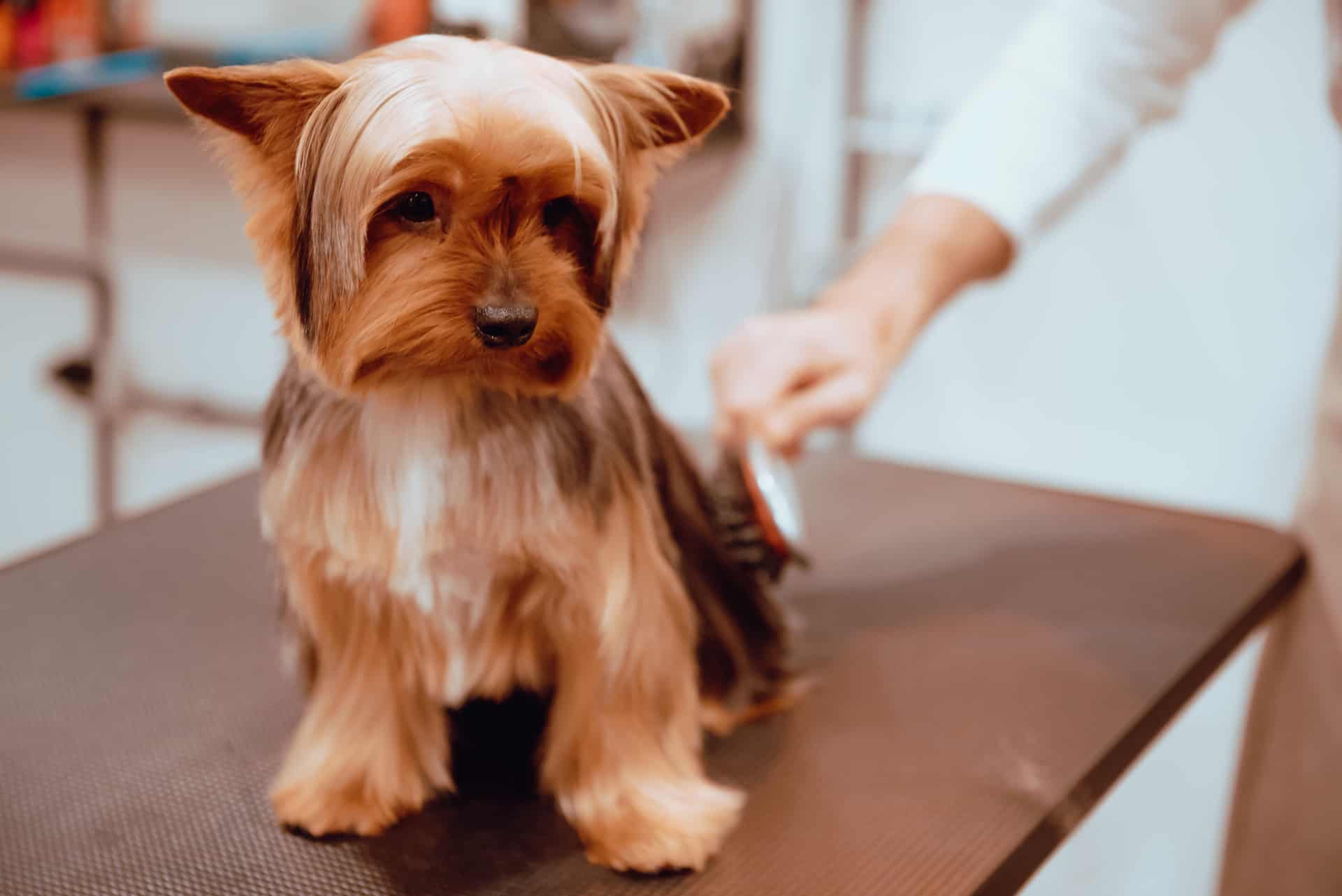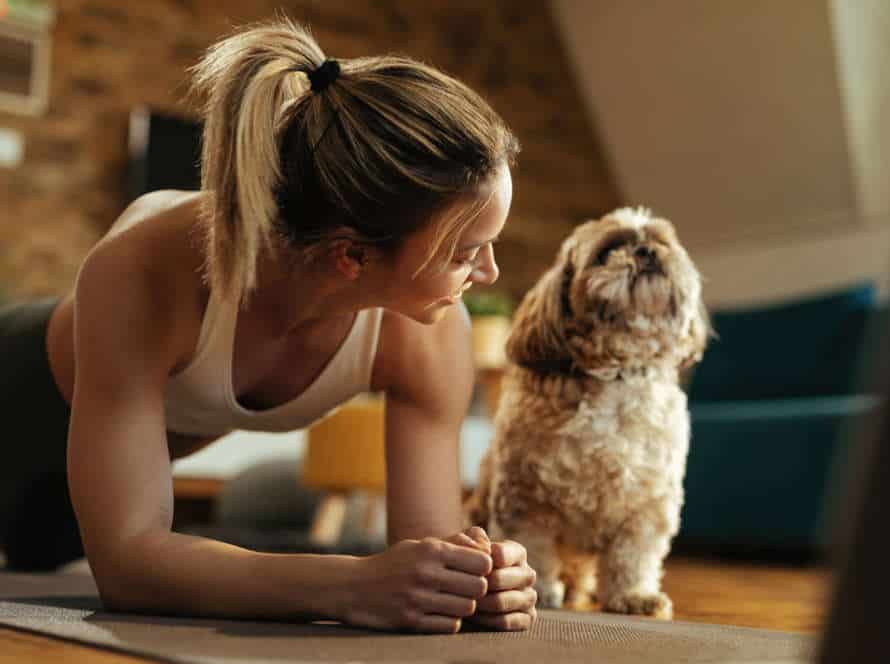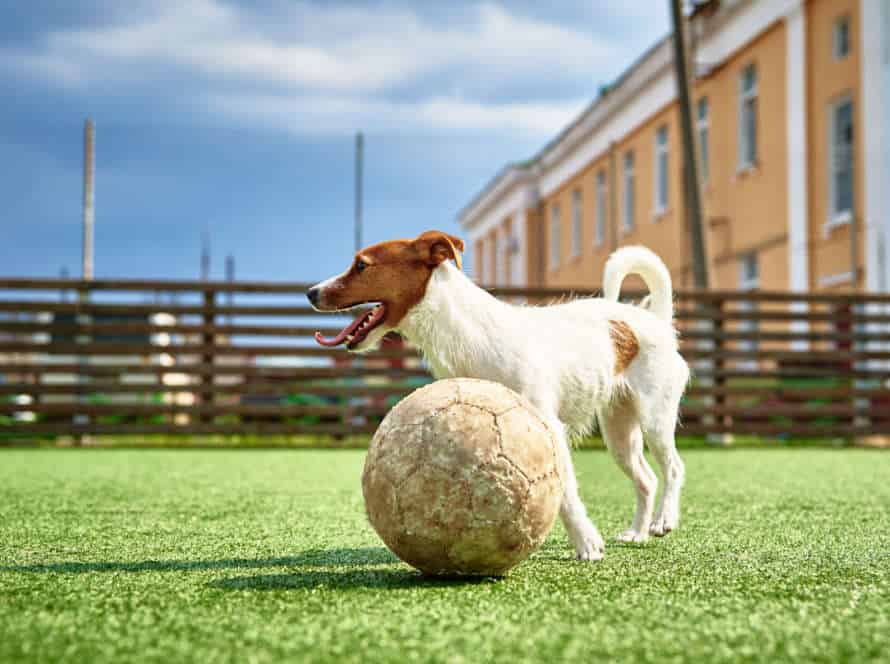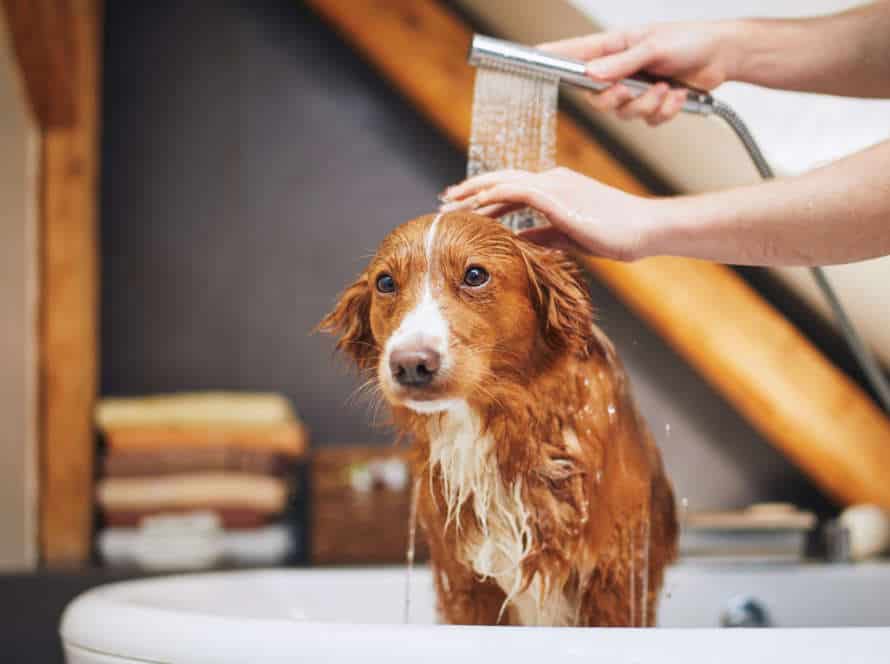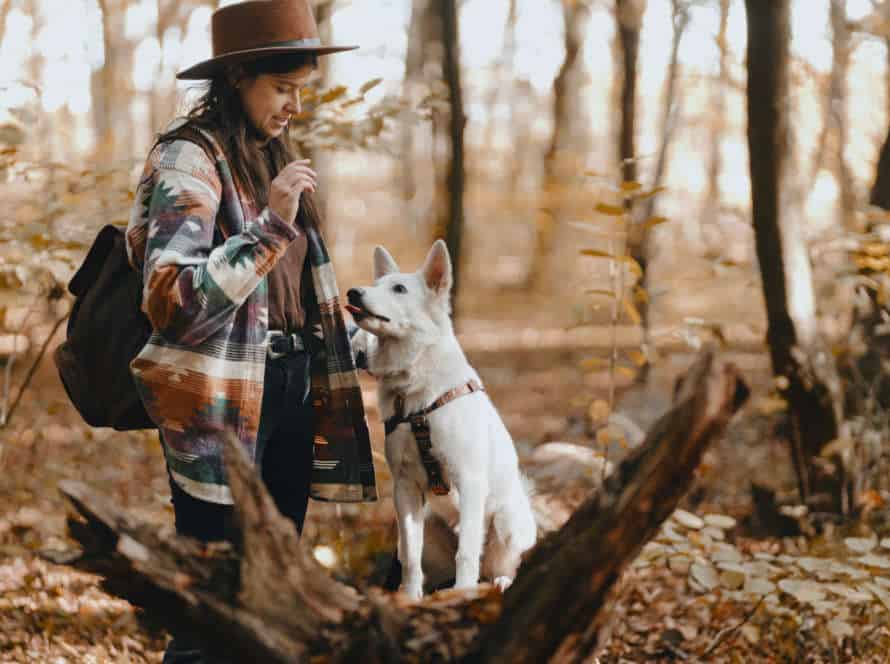Grooming Your Puppy: Tips and Techniques for Success
Grooming your pup isn’t just about keeping them clean and tidy. It’s also about promoting good health, socialization, and bonding. Here are some tips for successful puppy grooming:
- Start Early: Introduce your pup to grooming as soon as possible. This will help them get used to being handled and groomed.
- Brushing: Brush your pup’s coat regularly. This removes loose hair, dirt, and debris. Plus, it stimulates blood circulation and distributes natural oils for a healthy coat.
- Bathing: Use a gentle puppy shampoo and warm water to bathe your pup every 4-6 weeks. Avoid getting water and soap in the pup’s eyes, ears, and nose. Use a towel or hairdryer to dry them thoroughly.
- Nail Clipping: Use a sharp and safe clipper to trim your pup’s nails every 4-6 weeks. Be careful not to cut the quick, which is a vein that runs into the nail.
Pro Tip: Reward your pup with treats, praise, and playtime throughout the grooming process. This reinforces positive behavior and makes it an enjoyable experience.
Understanding Your Puppy’s Coat
Puppies need a healthy coat for their wellbeing. Knowing their coat type helps you groom them better. This article explains different puppy coat types and how to groom them. Get ready to give your pup the best care!
Different fur types and grooming needs
To keep your pup’s coat healthy and shiny, it’s essential to know the different fur types and their grooming needs.
- Short hair: Short haired doggos have a gloss coat which sheds little. Brushing and bathing only when needed.
- Long hair: Soft and silky fur which sheds moderately and tangles easily. Daily brushing and regular trimming to maintain coat health.
- Curly hair: Thick and plush fur which mats easily. Need regular trips to the groomer and daily brushing to avoid tangles and mats.
- Double coat: Two layers of fur – an outermost layer that is glossy and an insulative undercoat. Frequent brushing and professional grooming to manage the thick coat and prevent matting and excessive shedding.
By understanding your pup’s fur type and needs, you can make sure its coat stays healthy and tangle/mat free!
Brushing techniques for short haired breeds
Brushing short-haired dogs is key to a healthy, glossy coat. Here are some tips to help you out:
- Bristle Brush: Use a bristle brush once a week on a short-haired pooch. This will spread natural skin oils and give your pup a nice shine. Start at the head and work down to the tail, going with the fur’s grain.
- Rubber Brush: For shedding, use a rubber brush weekly. It catches loose hairs that cling to your dog’s coat.
- Zoom Groom: A zoom groom is great for all-purpose brushing. Its rubber nubs remove dirt and debris from your pup’s coat. Use it once a week.
Short-haired breeds need less grooming, but regular brushing is a must. It keeps the coat healthy and shiny. Plus, it spreads natural oils, removes dirt and debris, and reveals any lumps or bumps.
Brushing techniques for long haired breeds
Brushing long-haired dog breeds can be tricky for pet owners. But, it is key to keep your pup’s coat healthy and looking great. Here are three brushing techniques to help you groom your pooch:
- Slicker brush: Begin by brushing your dog with a slicker brush. This can help clear away tangles, mats, and extra hair. Section your dog’s coat from the head to the tail. Be gentle so you don’t hurt your pup’s skin.
- Comb: After the slicker brush, use a comb to get rid of remaining tangles and mats. Be careful not to pull too hard on the hair. Use small strokes.
- Bristle brush: Finally, use a bristle brush. This will help distribute natural oils around your pup’s coat, making it shiny and healthy.
Make sure you groom your long-haired dog regularly with these brushing techniques. Pro Tip: Give your doggy treats and praise during and after grooming sessions. This will make the experience enjoyable and positive.
Bathing Your Puppy
Bathing your pup is essential for their health and cleanliness. But, it can be tricky! Here’s a few pointers to help make it easier.
Why should you bathe your puppy? When is the right time? Read on to get the answers!
How often to bathe your puppy
Figuring out when to give your pup a bath is based on the breed, movement rate, and lifestyle. Too many baths can strip their fur of important oils, causing skin irritation and dryness. Not enough baths can create bad smells and skin illnesses.
Here are some tips:
- Pups under 3 months shouldn’t be bathed unless they’re very dirty or have fleas.
- 3-6 months old puppies can be washed every 4 weeks, or when needed if they get messy.
- Dogs 6 months+ can usually wait 6 weeks between bathing, unless they have skin worries or allergies.
Always use a puppy-specific shampoo. Be sure to rinse well to stop skin problems. Don’t forget to clean the ears, clip the nails, and brush the fur too.
Choosing the right shampoo for your puppy
Choosing the right shampoo for your pup is important. Here are some tips to keep in mind:
- Look for shampoos designed for puppies.
- Make sure the shampoo is pH-balanced to protect the pup’s skin and eyes.
- Choose a shampoo that suits your pup’s skin and coat.
- Don’t use human shampoos or products with harsh chemicals like sulfates, parabens, or artificial colors/fragrances.
- After shampooing, rinse your pup thoroughly. Use a pet-specific conditioner if needed to keep their coat shiny and healthy.
Techniques for bathing your puppy without stressing them
Bathing your pup can be tricky! Here are some tricks to make it a breeze:
- Set up a safe, comfy bathing area. This means a non-slip mat and warm water.
- Get a mild, puppy-specific shampoo. A little goes a long way – too much can strip their coat of oils.
- Gently massage the shampoo into their coat. No soap in their eyes or nose!
- Rinse with warm water – all shampoo must go!
- Towel-dry them. If they’re comfortable, use the lowest heat setting on a hair dryer.
- Reward them throughout the process. This makes them associate bathing with good experiences.
Maintaining Good Oral Hygiene
Ensuring your pup’s oral hygiene is key to their health. Not brushing teeth can cause dental disease, bad breath, and other oral issues. You can help your pup with a few easy steps. In this section, we’ll discuss the basics of brushing teeth and other tips for healthy teeth.
How to introduce your puppy to tooth brushing
Introduce your pup to toothbrushing for good oral hygiene and health! Here’s how:
- Choose a quiet spot to be comfy.
- Let your pup sniff and explore the brush and paste.
- Put a bit of toothpaste on the brush and carefully put it in their mouth.
- Circle the brush over their teeth and gums, one section at a time.
- Reward with treats or playtime after brushing.
- Start slow with short sessions, increasing time and frequency.
- Only use toothpaste for doggies – human toothpaste is not safe.
Follow these steps and your pup will be toothbrushing with ease, keeping dental issues away.
Best practices for puppy tooth brushing
Start early! Begin brushing your pup’s teeth as soon as you can. Have short, gentle sessions and increase duration/intensity over time.
Use the right tools – get a dog-specific toothbrush and toothpaste. Human toothpaste can hurt their digestive system.
Be gentle – use slow, circular motions. No aggressive scrubbing!
Make it fun – reward them with treats or compliments after each session.
Be consistent – brush their teeth every day.
Pro tip: If they won’t cooperate, try dental wipes or chews.
Alternatives to tooth brushing for maintaining oral hygiene
Tooth brushing is the top way to keep your oral hygiene in check. But, there are other options for your pet’s teeth and gums.
Like dental chews. These treats scrape away tartar and freshen breath.
Then there’s dental water additives. These can be added to water to fight plaque and freshen breath.
Dental wipes are another option. They remove food debris and plaque from your pet’s teeth and gums.
Or, you could get a professional dental cleaning from your vet. It removes tartar build-up and prevents dental disease.
Consult your vet to decide which method is best for your pet. Plus, regular oral hygiene can help your pet’s health and extend their life.
Trimming Nails and Cleaning Ears
Grooming your pup? Intimidating! But it’s essential to keep your pooch looking and feeling top-notch. One step to help keep your pup happy and healthy? Trim their nails and clean their ears. Here, we’ll provide tips for success in these areas of puppy grooming.
Trimming your puppy’s nails
Trimming pup’s nails is a vital part of grooming that can be tricky but great when done right. Here are some tips:
- Introduce pup to the clippers and let them sniff and play with them.
- Hold pup’s paw firm and gently press their toe to extend the nail.
- Use sharp and clean clippers to cut the tip of the nail, avoiding the pinkish quick.
- If you cut the quick, use styptic powder to stop bleeding.
- Give pup treats and positive reinforcement to make it less stressful.
In addition, it’s important to clean their ears regularly with a gentle ear cleaner, to stop infections and keep them healthy.
When to clean your puppy’s ears
It’s vital to clean your pup’s ears to keep their general health and hygiene. But, know when to clean them- to avoid any harm or distress to your furry friend. Here are signals that your puppy’s ears need a clean:
- An unpleasant smell from the ears
- Excessive scratching or head shaking
- Redness or swelling seen in or around the ear
- Presence of dirt or wax accumulation
If you spot any of these signs, it’s time to clean the pup’s ears. Ask your vet first to make sure you do it correctly and to eliminate any underlying health issues. Regular ear checkups can also help stop future complications.
Step-by-step instructions for ear cleaning
Cleaning your pup’s ears is a must-do! Here’s how to do it easily.
- Take a peek at your pup’s ears. Check for redness, swelling, and discharge – if so, visit the vet.
- Lift their ear and squirt a small amount of ear cleaning solution into the ear canal.
- Massage the base of the ear to disperse the solution and break up any wax buildup.
- Let your pup shake their head off to help get rid of fallen debris.
- Use a clean cotton ball or pad to wipe away visible debris from the ear flap and around the ear canal.
Pro tip: Don’t use cotton swabs or push the cotton ball too far into the ear canal. This can cause damage or injury.
Handling Grooming Challenges
Grooming your puppy can be a challenge. But, use the right techniques and it’ll be a breeze! Get your pup accustomed to the process to avoid any stress. Here are some useful tips and techniques to make the grooming process a pleasant one for you and your pup.
Tackling matted fur
Tackling matted fur can be tricky when grooming your pup, but it’s very important to maintain a clean and healthy coat. Here are some tips:
- Start from the bottom – use a comb or your hands to separate the matted clump from the bottom and work your way up.
- Be patient – pulling or tugging the mat can cause discomfort and more tangles.
- Use detangler – spray or apply oil to the matted area and gently work it in with your fingers.
- Cut cautiously – if the mat is too tough to detangle, use scissors to cut it out carefully, away from the skin.
Remember to keep up with regular grooming to prevent further matting and keep your pup’s coat looking and feeling wonderful.
Dealing with fleas and ticks
Fleas and ticks are pesky critters that can cause your puppy to feel uncomfortable and sick. Here are some tips to help you control them:
- Regular Grooming: Keep your pup tidy and brushed often. This prevents fleas and ticks from settling. Bathe your pup when necessary.
- Natural Remedies: Try using natural products like lavender, lemon, and eucalyptus oils to repel the pests. You can also use a flea comb for extra help.
- Medications: See your vet for medications that can help prevent and treat flea and tick infestations.
- Tick Removal: If you find a tick on your pup, use tweezers to carefully take it out – make sure you get the head too. Clean the area with rubbing alcohol and keep an eye out for tick-borne illnesses.
By following these tips, you can give your pup a flea and tick free life and make sure they stay happy and healthy!
Addressing skin irritations
Skin irritation is a common issue when grooming puppies. Follow these tips for best results:
- Identify the cause, e.g. fleas, ticks, allergies.
- Treat it with the right medications or grooming products like flea shampoo or hypoallergenic conditioner.
- Use soft tools, like a brush with soft bristles or a comb with rounded teeth, to avoid more irritation.
- Limit bathing to avoid drying out the skin and making irritation worse.
- For sensitive puppies, use a leave-in conditioner or soothing spray after grooming.
- Be sure to reward and praise your pup during the grooming process – this will make it a pleasant experience for both of you!
Hiring Professional Groomers
Puppy grooming? Hire a pro! Groomers have the knowledge to handle your pup’s grooming. Their tips and techniques ensure a safe, proper job. What are the benefits? Let’s take a look!
Choosing a reputable groomer
Finding a reliable groomer is key to make sure your pet is in good hands with experienced professionals that prioritize their safety. Follow these tips to choose a groomer you can trust:
- Research: Look at online reviews and ask people with pets for recommendations.
- Visit the salon: Take a look around to make sure it’s clean, maintained and has the right equipment.
- Ask questions: Ask about their training, experience and safety procedures. A good groomer will answer any questions you have.
- Watch the interactions: See how the groomer interacts with your pet and other animals. A good groomer will be calm and handle them gently.
- Trust your instincts: If something doesn’t feel right or you don’t feel comfortable, don’t hesitate to leave.
Regular grooming is essential for your pet’s health and happiness. Choosing the right groomer is investing in your pet’s well-being.
Pro Tip: Before committing to a long-term relationship, schedule a trial run with the groomer. That way, both you and your pet can get to know the groomer and their techniques.
Preparing your puppy for a visit to the groomer
Prepare your pup for the groomer! Here are some tips:
- Start grooming them at home. Handle their paws, ears, and tail.
- Choose a professional groomer who specializes in puppies.
- Visit the salon before their appointment for a meet & greet.
- Bring familiar toys or treats to keep them calm.
- Give clear instructions to the groomer & mention any concerns.
- Remember: Regular grooming appointments are important for coat health – don’t wait too long!
What to expect during a professional grooming session
When you take your furry friend to a professional groomer, you can expect services tailored to their breed, hair type, and health. Here’s what to expect:
- Brushing and Combing: Mats and tangles will be removed, as well as dead hair.
- Bath and Dry: A pet-safe shampoo is used, then excess water is blown away.
- Ear Cleaning: Dirt and debris will be removed carefully.
- Nail Trimming: To avoid splits, tears, or ingrown nails.
- Hair Trimming, Clipping, or Shaving: Depending on your pet’s breed and hair type, the groomer may trim, clip, or shave their hair.
Pro tip- Talk to the groomer about expectations, experiences, and equipment.
Frequently Asked Questions
Q: When should I start grooming my puppy?
A: It’s best to start grooming your puppy as early as possible, even before they turn 12 weeks old. This helps them get used to the process and makes grooming a regular part of their routine.
Q: What tools do I need for grooming my puppy?
A: The basic tools you’ll need are a brush or comb, nail clippers, and shampoo. Depending on the breed of your puppy, you may also need specific tools like a slicker brush or shears.
Q: How often should I groom my puppy?
A: This depends on the breed of your puppy and the length of their hair. Generally, dogs with longer hair will require more frequent grooming. As a general rule, you should aim to groom your puppy at least once a week.
Q: How do I keep my puppy calm during grooming?
A: It’s important to introduce your puppy to grooming gradually, using positive reinforcement techniques like treats and praise. You can also try grooming them when they’re tired or after a play session.
Q: Should I groom my puppy at home or take them to a professional groomer?
A: This is ultimately up to you, but there are some advantages to taking your puppy to a professional groomer. They have the expertise and equipment to groom your puppy efficiently and safely, and they can also provide additional services like nail trimming and ear cleaning.
Q: What should I do if my puppy has sensitive skin?
A: If your puppy has sensitive skin, it’s important to choose a shampoo that’s specifically designed for their needs. You can also try using a soft-bristled brush or comb and avoid using harsh grooming tools like electric clippers.

